Abstract
OBJECTIVES: This study compared the relative effects on access to health care of relationship with a regular physician and insurance status. METHODS: The subjects were 1952 nonretired, non-Medicare patients aged 18 to 64 years who presented with 1 of 6 chief complaints to 5 academic hospital emergency departments in Boston and Cambridge, Mass, during a 1-month study period in 1995. Access to care was evaluated by 3 measures: delay in seeking care for the current complaint, no physician visit in the previous year, and no emergency department visit in the previous year. RESULTS: After clinical and socioeconomic characteristics were controlled, lacking a regular physician was a stronger, more consistent predictor than insurance status of delay in seeking care (odds ratio [OR] = 1.6, 95% confidence interval [CI] = 1.2, 2.1), no physician visit [OR] = 4.5%, 95% CI = 3.3, 6.1), and no emergency department visit (OR = 1.8, 95% CI = 1.4, 2.4). For patients with a regular physician, access was no different between the uninsured and the privately insured. For privately insured patients, those with no regular physician had worse access than those with a regular physician. CONCLUSIONS: Among patients presenting to emergency departments, relationship with a regular physician is a stronger predictor than insurance status of access to care.
Full text
PDF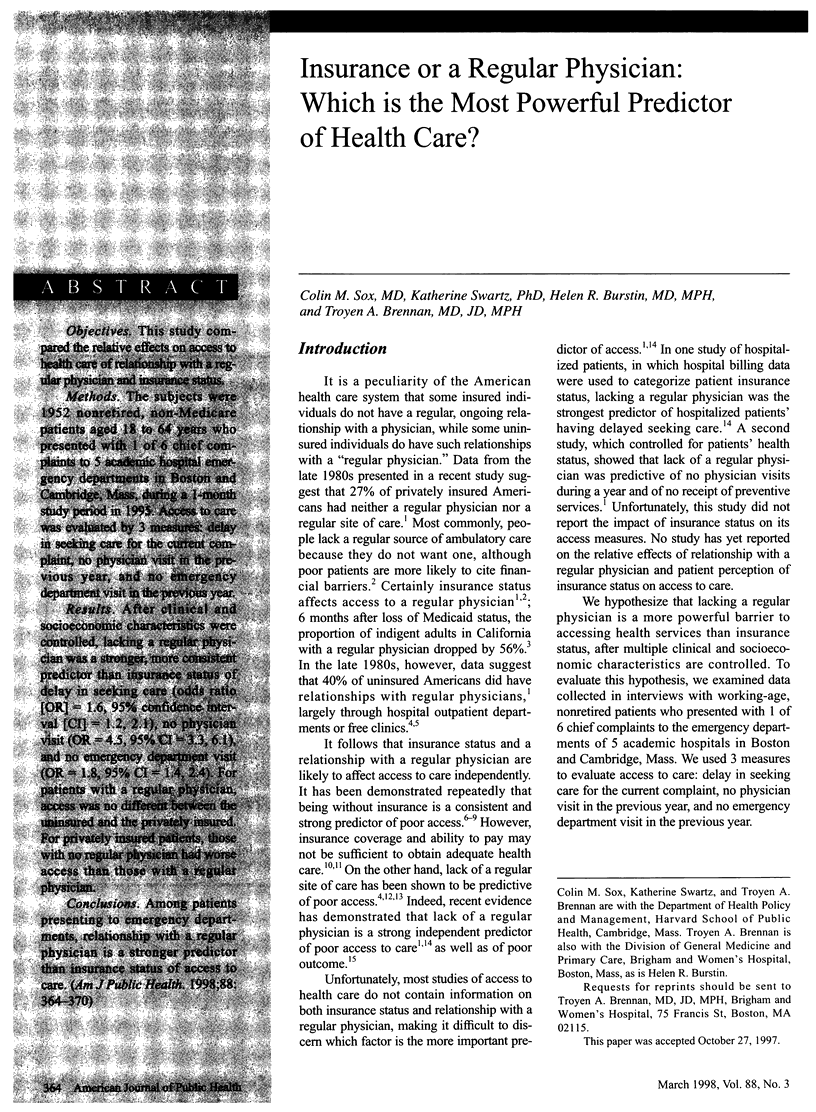
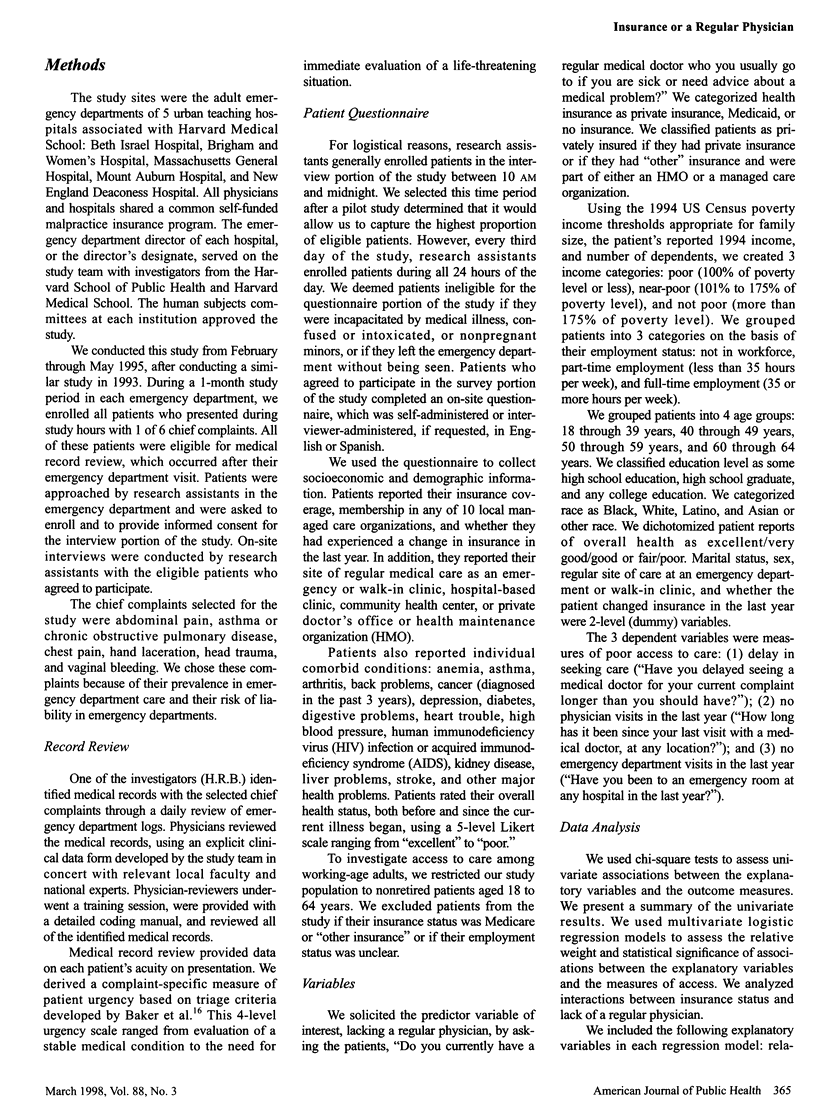
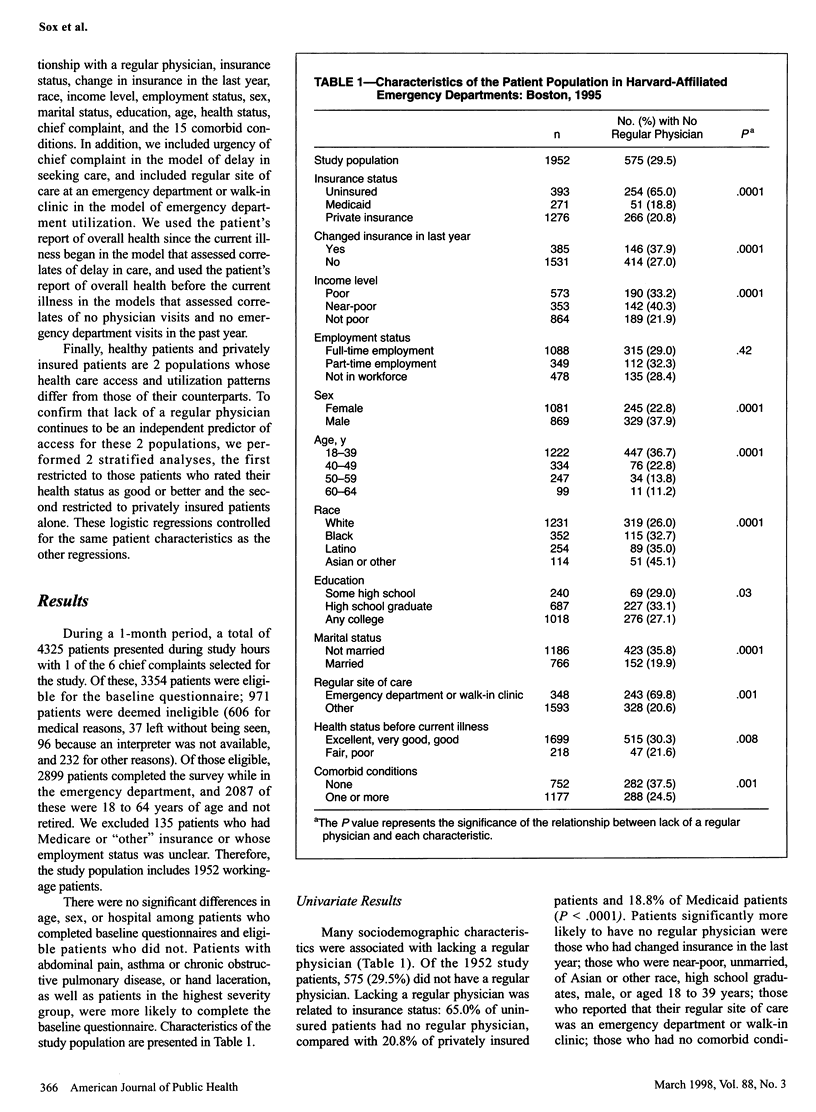
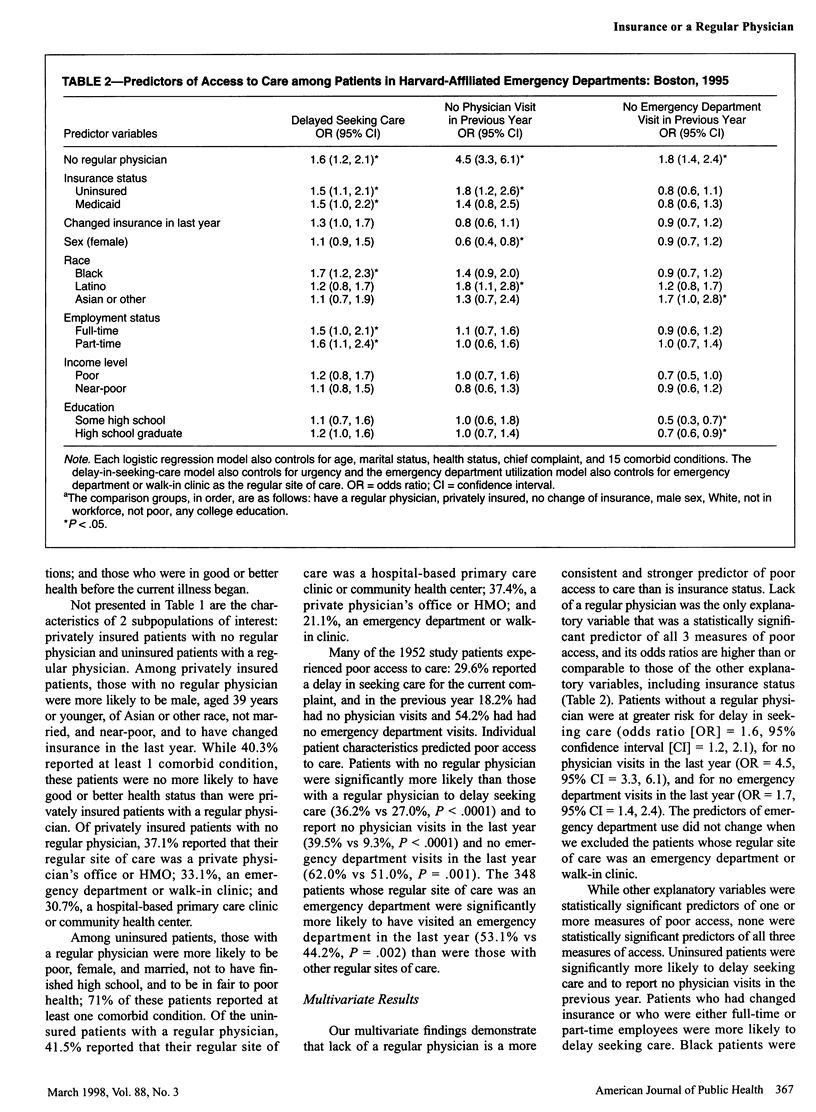
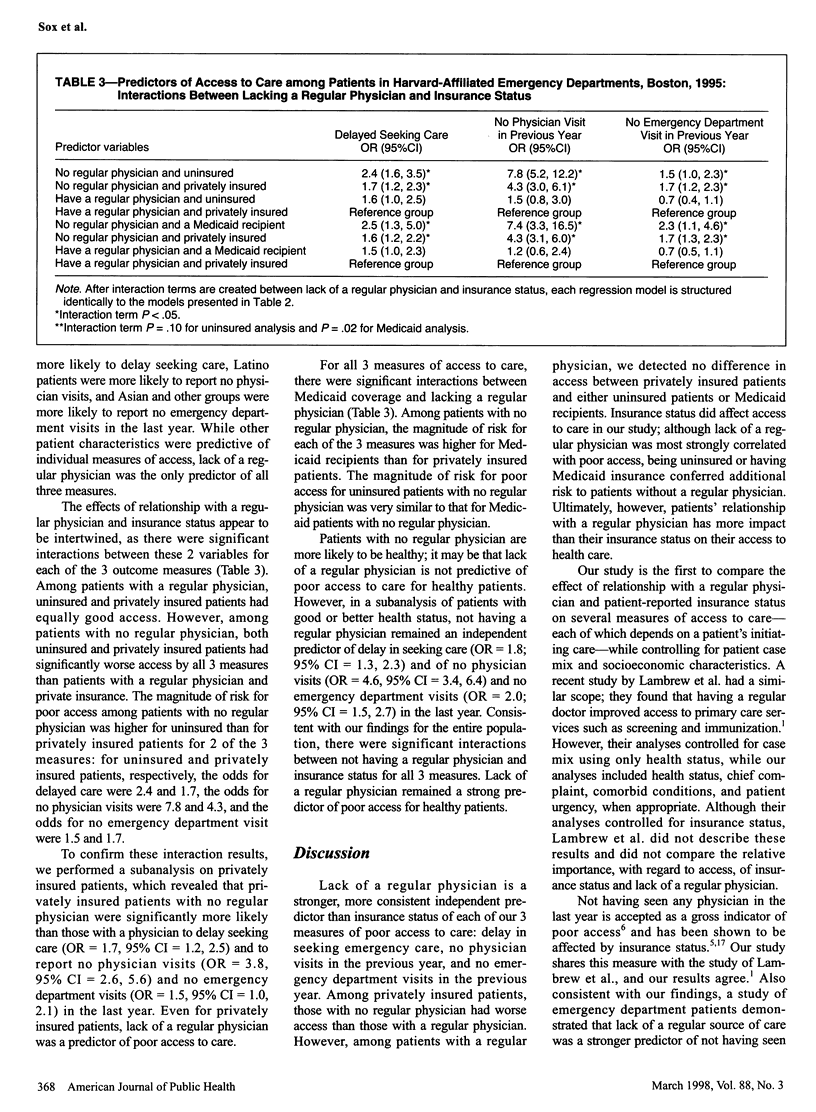
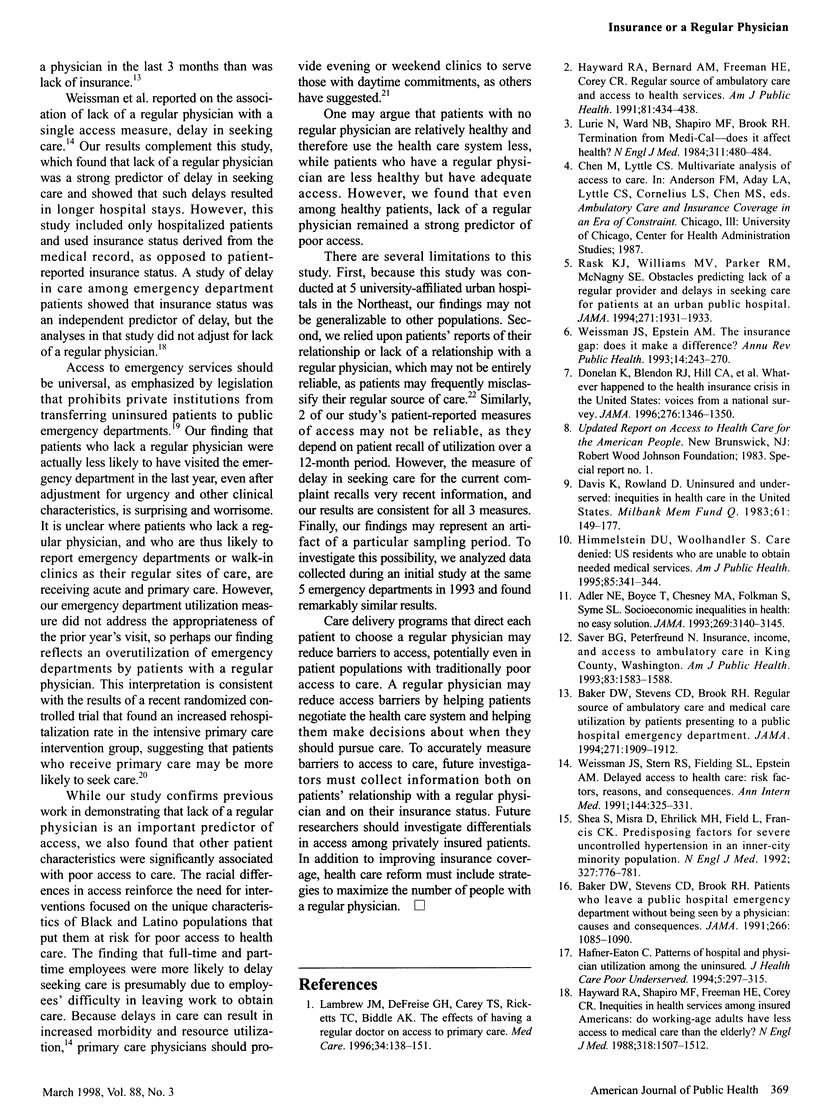
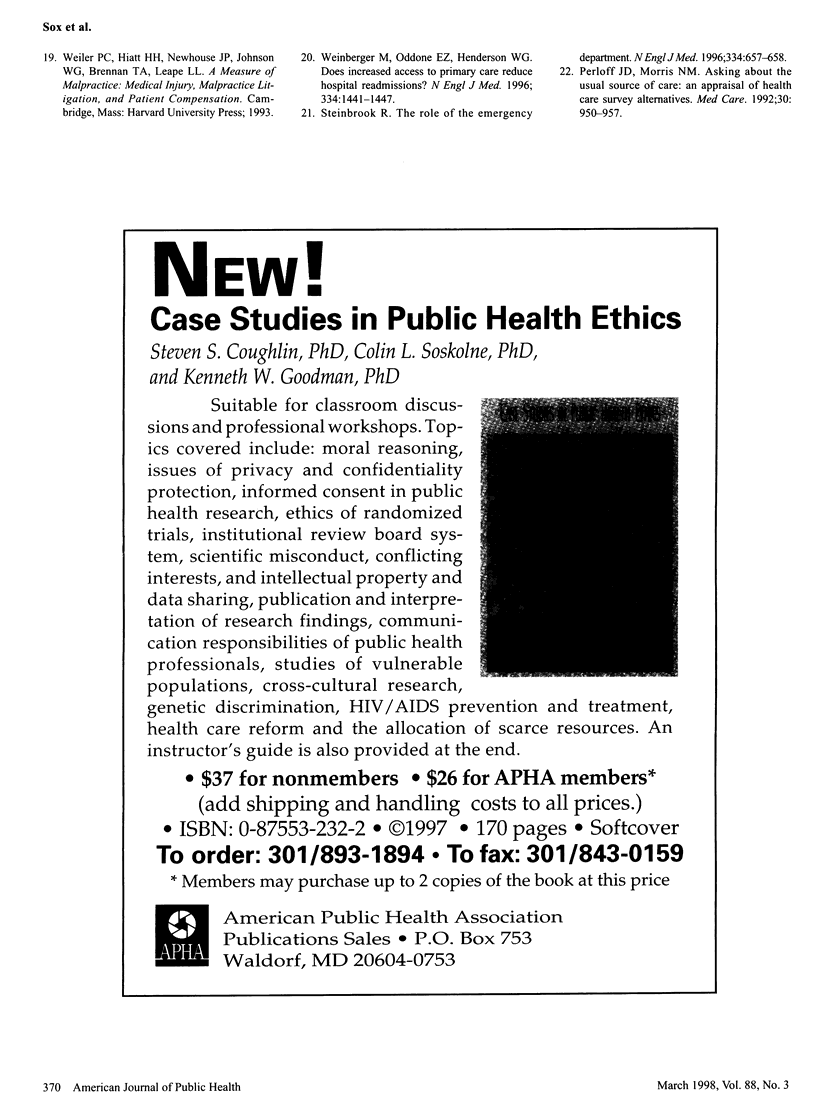
Selected References
These references are in PubMed. This may not be the complete list of references from this article.
- Adler N. E., Boyce W. T., Chesney M. A., Folkman S., Syme S. L. Socioeconomic inequalities in health. No easy solution. JAMA. 1993 Jun 23;269(24):3140–3145. [PubMed] [Google Scholar]
- Baker D. W., Stevens C. D., Brook R. H. Patients who leave a public hospital emergency department without being seen by a physician. Causes and consequences. JAMA. 1991 Aug 28;266(8):1085–1090. [PubMed] [Google Scholar]
- Baker D. W., Stevens C. D., Brook R. H. Regular source of ambulatory care and medical care utilization by patients presenting to a public hospital emergency department. JAMA. 1994 Jun 22;271(24):1909–1912. [PubMed] [Google Scholar]
- Davis K., Rowland D. Uninsured and underserved: inequities in health care in the United States. Milbank Mem Fund Q Health Soc. 1983 Spring;61(2):149–176. [PubMed] [Google Scholar]
- Donelan K., Blendon R. J., Hill C. A., Hoffman C., Rowland D., Frankel M., Altman D. Whatever happened to the health insurance crisis in the United States? Voices from a national survey. JAMA. 1996 Oct 23;276(16):1346–1350. [PubMed] [Google Scholar]
- Hafner-Eaton C. Patterns of hospital and physician utilization among the uninsured. J Health Care Poor Underserved. 1994;5(4):297–315. doi: 10.1353/hpu.2010.0318. [DOI] [PubMed] [Google Scholar]
- Hayward R. A., Bernard A. M., Freeman H. E., Corey C. R. Regular source of ambulatory care and access to health services. Am J Public Health. 1991 Apr;81(4):434–438. doi: 10.2105/ajph.81.4.434. [DOI] [PMC free article] [PubMed] [Google Scholar]
- Hayward R. A., Shapiro M. F., Freeman H. E., Corey C. R. Inequities in health services among insured Americans. Do working-age adults have less access to medical care than the elderly? N Engl J Med. 1988 Jun 9;318(23):1507–1512. doi: 10.1056/NEJM198806093182305. [DOI] [PubMed] [Google Scholar]
- Himmelstein D. U., Woolhandler S. Care denied: US residents who are unable to obtain needed medical services. Am J Public Health. 1995 Mar;85(3):341–344. doi: 10.2105/ajph.85.3.341. [DOI] [PMC free article] [PubMed] [Google Scholar]
- Lambrew J. M., DeFriese G. H., Carey T. S., Ricketts T. C., Biddle A. K. The effects of having a regular doctor on access to primary care. Med Care. 1996 Feb;34(2):138–151. doi: 10.1097/00005650-199602000-00006. [DOI] [PubMed] [Google Scholar]
- Lurie N., Ward N. B., Shapiro M. F., Brook R. H. Termination from Medi-Cal--does it affect health? N Engl J Med. 1984 Aug 16;311(7):480–484. doi: 10.1056/nejm198408163110735. [DOI] [PubMed] [Google Scholar]
- Perloff J. D., Morris N. M. Asking about the usual source of care. An appraisal of health care survey alternatives. Med Care. 1992 Oct;30(10):950–957. doi: 10.1097/00005650-199210000-00007. [DOI] [PubMed] [Google Scholar]
- Rask K. J., Williams M. V., Parker R. M., McNagny S. E. Obstacles predicting lack of a regular provider and delays in seeking care for patients at an urban public hospital. JAMA. 1994 Jun 22;271(24):1931–1933. [PubMed] [Google Scholar]
- Saver B. G., Peterfreund N. Insurance, income, and access to ambulatory care in King County, Washington. Am J Public Health. 1993 Nov;83(11):1583–1588. doi: 10.2105/ajph.83.11.1583. [DOI] [PMC free article] [PubMed] [Google Scholar]
- Shea S., Misra D., Ehrlich M. H., Field L., Francis C. K. Predisposing factors for severe, uncontrolled hypertension in an inner-city minority population. N Engl J Med. 1992 Sep 10;327(11):776–781. doi: 10.1056/NEJM199209103271107. [DOI] [PubMed] [Google Scholar]
- Steinbrook R. The role of the emergency department. N Engl J Med. 1996 Mar 7;334(10):657–658. doi: 10.1056/NEJM199603073341010. [DOI] [PubMed] [Google Scholar]
- Weinberger M., Oddone E. Z., Henderson W. G. Does increased access to primary care reduce hospital readmissions? Veterans Affairs Cooperative Study Group on Primary Care and Hospital Readmission. N Engl J Med. 1996 May 30;334(22):1441–1447. doi: 10.1056/NEJM199605303342206. [DOI] [PubMed] [Google Scholar]
- Weissman J. S., Epstein A. M. The insurance gap: does it make a difference? Annu Rev Public Health. 1993;14:243–270. doi: 10.1146/annurev.pu.14.050193.001331. [DOI] [PubMed] [Google Scholar]
- Weissman J. S., Stern R., Fielding S. L., Epstein A. M. Delayed access to health care: risk factors, reasons, and consequences. Ann Intern Med. 1991 Feb 15;114(4):325–331. doi: 10.7326/0003-4819-114-4-325. [DOI] [PubMed] [Google Scholar]


